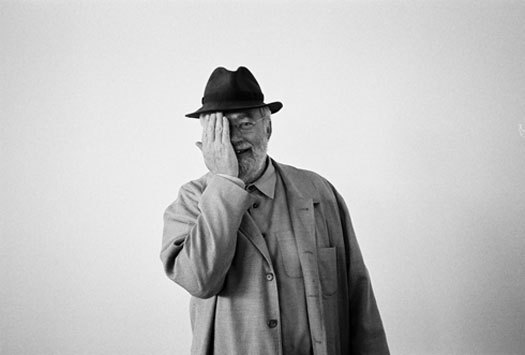
September 10, 2012
Bill Moggridge 1943-2012

Bill Moggridge was the first person I knew who understood that interaction design could be a revolutionary medium for change. He understood that the screen was a blank canvas with no visible lingua franca. He made everything sound possible and could make the dullest design project sound utterly fascinating — everything seeming somehow more exotic because of his glorious British accent. And he was unpretentious: a rarity among people whose gifts are so extraordinary, and whose contributions to public life are so indelible and rich.
I watched, as we all did, as Bill migrated from industrial design guru to museum director, a role that suited him and an institution that seemed worthy of those gifts. To the degree that the Smithsonian is a national treasure, so, too, was Bill Moggridge, who lost his battle with cancer over the weekend. That big beautiful Fifth Avenue mansion and that elegant man with his exquisite accent suited each other perfectly.
I last saw Bill Moggridge last summer, when the United States postal service debuted its Industrial Design stamps at the Cooper-Hewitt. Before the event, those of us participating in the first day of issue ceremony gathered in an anteroom, where we were given our marching orders. It was all rather formal, as these things tend to be, except that Bill was so excited about the stamp issue, he couldn’t stand still. I wish I could remember what he said — something about how thrilling it was that postage could at once utilitarian and visually striking — and we vowed to get together and talk about how we could do more stamps, better stamps, visually compelling and memorable stamps about subjects with meaning and purpose and broad, public appeal.
Broad public appeal was what Bill Moggridge did for a living, never compromising his own aesthetic integrity, his intelligence, or his natural curiosity about the greater good. He was a natural collaborator, who realized that the designer’s role was to listen and watch and learn by doing: this was, and is, interaction in the truest sense. And because he made things — real, palpable things like laptops and defibrillators — he leaves behind a material presence that will, by its very nature, endure. But his legacy is much more than that: it is a legacy of taking chances, seeing promise, understanding need, visualizing futures, and everything in between.
Many of you will have your own stories about Bill Moggridge, and we invite you to share them here.
Observed
View all
Observed
By Jessica Helfand
Recent Posts
A quieter place: Sound designer Eddie Gandelman on composing a future that allows us to hear ourselves think It’s Not Easy Bein’ Green: ‘Wicked’ spells for struggle and solidarity Making Space: Jon M. Chu on Designing Your Own Path Runway modeler: Airport architect Sameedha Mahajan on sending ever-more people skyward
 Jessica Helfand, a founding editor of Design Observer, is an award-winning graphic designer and writer and a former contributing editor and columnist for Print, Communications Arts and Eye magazines. A member of the Alliance Graphique Internationale and a recent laureate of the Art Director’s Hall of Fame, Helfand received her B.A. and her M.F.A. from Yale University where she has taught since 1994.
Jessica Helfand, a founding editor of Design Observer, is an award-winning graphic designer and writer and a former contributing editor and columnist for Print, Communications Arts and Eye magazines. A member of the Alliance Graphique Internationale and a recent laureate of the Art Director’s Hall of Fame, Helfand received her B.A. and her M.F.A. from Yale University where she has taught since 1994.



